David Kroodsma has already logged more than 30,000 miles traveling the world by bicycle and raising awareness about climate change. This week, the author, data journalist, and travel adventurer embarked on his latest journey: an 8,000 mile journey across Asia from Turkey to Bangladesh.
I caught up to David to record this #EnergyChat interview shortly before he departed for Istanbul to begin his next bicycle adventure...
David is the author of The Bicycle Diaries: My 21,000-Mile Ride for the Climate, which recounts his first cross-continental bicycle adventure from California to Tierra Del Fuego at the southern tip of South America from November 2005 to March 2007 and a trip from Massachusetts to California following his return to the United States. (He also traveled across Eastern Europe in 2012, bringing his total odometer to 30,000-plus miles.)
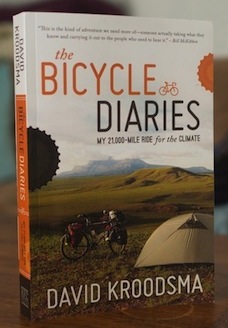 The Bicycle Diaries is one part travel adventure and one part on-the-ground exploration of the twin humanitarian imperatives that define the 21st century: climate change and global development. It's an excellent read, and I highly recommend it to those with a thirst for travel or a desire to understand why climate change is both so important and so challenging to solve.
The Bicycle Diaries is one part travel adventure and one part on-the-ground exploration of the twin humanitarian imperatives that define the 21st century: climate change and global development. It's an excellent read, and I highly recommend it to those with a thirst for travel or a desire to understand why climate change is both so important and so challenging to solve.
Throughtout his long journey across the Americas, David, who holds a masters degree in environmental science from Stanford University, delivered presentations on climate change for school children, did interviews with dozens of newspapers and television programs, and examined first hand some of the impacts of climate change. But the journey also took David far from the comfort of the United States and out of the developed world context within which so many of us think about, debate, and discuss climate change (myself included).
Reading The Bicycle Diaries, you are transported along with David into the one-room, mud-and-brick home of Melvin and Rosa, a Honduran family who lacks electricity, but watches Ugly Betty on a small black and white TV powered by a car battery. You meet Baltazar, a 55 year old Oaxacan who fishes for shrimp with his two sons in the mangroves along Mexico's Gulf of Tehuantepec earning 100 pesos a day (about $8.00). And you witness the relative prosperity of Bogota, Columbia, capital of a nation still plagued by armed conflict but where citizens are proud of the bicycle-friendly, human-scale city they have built over the last decade.Â
David paints a clear picture of ecosystems and communities simultaneously at threat from climate change â€" from Monteverde's unique cloud forests to the mangroves that support Baltazar's fishery â€" and nations facing an even more pressing imperative to expand economic opportunity for millions of their citizens. It's an intimate portrait of the intertwined climate and human development challenges that quite simply must be solved together.
The following excerpt captures the complex moral challenges that animate David's book:
"Climate models suggest [we will see] ... both more flooding and more droughts, which could mean more years of failed crops for subsistence farmers like Melvin and Rosa.
Some economists argue that we should focus on helping the poor develop economically, so that when a warmer world comes, people can afford to adapt. This idea makes sense: if Melvin and Rosa's children had more wealth, then they could build a stronger house that could better survive storms. Perhaps they could be able to buy food imported from Canada, or maybe they would invest in genetic engineering to create crops that can survive a warmer Honduras.
Melvin and Rosa's house in Honduras (Photo credit: David Kroodsma)
But to fuel such economic growth with our current technology would mean burning more coal and gasoline, which would just exacerbate global warming. More than two billion people â€" people like Melvin and Rosa â€" currently live on less than two dollars a day and use almost no fossil fuels. Before folks like them escape povery using the same technologies that my country used to develop our economy, we will likley pass the point of no return: when the world is on track to warm by more than what most experts consider "safe" (about 2 degrees Celsius, or 3.5 degrees Farenheit). Without affordable, abundant, carbon-free technologies, there is simply not enough atmosphere left for the Melvins and Rosas of the world.
... Before I left, I gave Melvin my headlamp, partly in thanks, and partly because it pained me to think of them in the dark every night. I wish I could have given them an electric light, and connected their house to the electric grid. I couldn't do either, but I feel we need to somehow help Melvin and families like his â€" the rest of the world's poor â€" improve their lives without overtaxing the atmosphere in the process. Melvin and Rosa deserve a more stable, comfortable lifestyle, which means using more energy, not less, and I am morally opposed to preventing them from getting it. If we have to choose between denying them energy or letting climate change occur, I would vote to let climate change continue unabated. I hope, though, that we don't have to make that choice."
It's an uncomfortable but powerful reality: only by developing and deploying a suite of clean, affordable, and massively scalable energy technologies can we hope to simultaneously confront climate change and fuel economic opportunity for those most in need of it.
On an intellectual level, I've known this for a long time. But reading David's book puts a very real, human face on the abstractions that have ruled so much of my thinking about climate change.Â
If you can't hop on your bike and journey across the Americas yourself, you can at least pick up a copy of David's book and go on the journey with him as you read.
Stay tuned at TheEnergyCollective.com as well for dispatches filed from David's latest year-long journey across Asia along with his wife, Lindsey Fransen, a specialist in climate adaptation planning and water conservation.

David and Lindsey's 8,000-mile route across Asia
Below you can read an excerpt from The Bicycle Diaries, reproduced with permission from the author.
Crossing the Border
An excerpt from The Bicycle Diaries: My 21,000-Mile Ride for the Climate, by David Kroodsma
I stopped pedaling and looked anxiously at the frontier. In front of me was the California-Mexico border, marked by a white tollbooth-like structure and a large sign that read Mexico in metal letters beneath the country's coat of arms: a large eagle perched on a cactus with a snake in its talons. It was an hour after sunrise on a sunday in early December, and the light angled through the cool desert air, illuminating the quiet, dusty town of Tecate just beyond the tollbooth.
If I was trying to be inconspicuous, I was failing. Clad in arm and leg warmers, I essentially wore full-body spandex, and I stood over six feet tall. My bike helmet had a large brim on the front and a cloth attached at the rear, both futile attempts to guard my pale skin from the sun. Between my outfit and my black touring bike with four red panniers, I wasn't going to blend in south of the border.
But, although I was conspicuous on the road, once I left it I was invisible. Unlike traveling by car, with a bike you can disappear off the highway at any point and set up camp, even just a hundred feet off the road, without a soul knowing where you've gone. Thieves can't rob you if they don't know you're there. It's the greatest sense of freedom; the world was my campground, my living room, my highway. The night before, five miles north of Tecate, I'd easily found a place to sleep, as numerous foot trails led away from the highway, and a patch of desert ground had already been clearedâ€"likely by people also wishing to keep hidden. I wondered how many illegal immigrants, how many of the people I saw working in California during my eight years in the state, had slept on similar patches of ground, staring at the stars.
At twenty-six years old, I was on the adventure I had dreamed of since I was twenty: starting from my home in California, I planned to ride south until I reached the southern tip of south America. I know this sounds a bit crazy. What sane person would camp along the Mexican borderâ€"the site of countless crimes and murdersâ€"let alone plan to ride alone across all of Latin America? Numerous countries I would travel through are besieged by the residual violence from recent civil wars; Colombia in particular endures an ongoing civil conflict, with nearly a third of the nation under rebel control. Moreoverâ€"except for in Chile, where I had studied for three months during collegeâ€"I had no friends and almost no contacts south of the border. My spanish was poor, and I had never traveled internationally by bike. Yet for some reason I chose to ignore all of these facts, and instead eagerly planned my route heedless of the risks. I decided I would ride solo across Central America, the Amazon, the Andes, and the wastelands of Patagonia, and I would reach the earth's end in just under a year and a half. And not only did I want to bike this distance alone, I wanted to take the opportunity to raise awareness of climate change in the processâ€"a topic I had spent the past four years studying. You might call me naïve. You might be right.
I had discovered bike touring six years earlier. After spending the summer after my sophomore year in college in the "biketopia" of Portland, Oregon, my friend Tom suggested that we "bike to school" in the largest sense of the phrase: riding the nine hundred miles from Portland to Stanfordâ€"and doing it in under two weeks. Pedaling a 1980s racing bike I had purchased that summer for $125, and carrying only a sleeping bag, tarp, and change of clothes, I biked with my friend along the rocky Oregon and California coastline. After just a few days, I was hooked.
While biking, no windshield protects you from the rain, heat, or wind, and there's no wall between you and the people along the road. In a car the scenery appears as if on television, framed by the windows. On a bike, you can practically touch everything you see. The world is right there, in 3-D. You also travel slowly enough that the person at the corner store can make eye contact and offer a greeting as you pass. And, off the highway, the bike becomes a prop for conversation, an excuse to talk. People lower their defenses and open their doors to cyclists in a way they don't for those traveling by car.
The trip to California took us nine days, riding as much as twelve hours a day. On that journey, we briefly met another cycle tourist who said he'd once taken off two years and biked to Patagonia. Our conversation was briefâ€"I didn't even get his nameâ€"but the idea stuck with me. When we arrived at the palm tree–lined boulevards of Palo Alto, I didn't want to start my classes; I just wanted to keep heading south. I later read online about a couple different adventurers who had cycled from North America to Argentina, and nearly every one said it was the best thing they'd done in their entire lives. It seemed like the greatest way to see the world, the most invigorating and intimate way to experience the planet. And a trip like this would also be relatively cheapâ€"the main costs just bike gear, food, and a return flight home. I calculated I could save enough cash for it in just two yearsâ€"that is, once I finished school and started working. From that point on I hoarded my earnings, planned, and dreamed.
I wanted more, though, than just an adventure. I somehow wanted to make a difference in the worldâ€"even though, in retrospect, I had a very limited idea of what this world is like. I had spent my entire life in school or labs, and it would be a major leap to head from the classroom to the open road. This bike-tour dream needed some fine-tuning.
so in the meantime I continued with my junior year at Stanford University, studying physics, a major I had chosen just because I enjoyed it, not because I thought it would make me particularly employable.Two years later I earned my master's degree, in interdisciplinary environmental science. I happened to be interested in the most abstract of global problemsâ€"climate change. I found it fascinating how carbon dioxide cycles through the earth's biosphere, lithosphere, atmosphere, and oceansâ€"and how this odorless, invisible gas has the power to so greatly alter the world's climate.
I was researching this issue in the years before the award-winning documentary An Inconvenient Truth was released in 2006, before climate change emerged as part of the national discussion.Through reading scientific papers and attending lab group meetings, and working on an ecological experiment studying the effects of warmer temperatures, I had become convinced that climate change poses a real and significant threat to our civilization, and that too few people understood the magnitude of the challenge. At some point I realized that these concerns dovetailed beautifully with my dream ride, so I decided to "ride to raise awareness of climate change." I would research the ways global warming was affecting the places I would be biking throughâ€"from California to Tierra del Fuegoâ€"and I'd encapsulate all I learned in a blog: www.rideforclimate.com. And as I traveled from region to region I'd share what I'd learned with each community, giving talks at schools and speaking with journalists about the very real threats climate change specifically posed to their environment.
In my head, it was a great idea; in practice, I had no idea how I would enact this plan in Latin America. I didn't even know how to say "carbon dioxide" in spanish when I started. And, given that the U.s. pollutes far more than Central and south America, raising awareness in those less polluting lands was a lower priority, earth-wise. And never mind that the original goal of my journey was adventure and not activism, or that multi-year bicycle vacations won't solve a problem as enormous as climate change. I was just as ignorant about my activist goals as I was about how I would travel in Latin America.
In retrospect, my goal of raising awareness in others was obviously backwardâ€"it was my own understanding that changed the most. I saw that climate change is just one of many challenges facing humanity. In many ways, it's less urgent than ongoing conflicts in the Middle east, or than the daily poverty experienced by billions of people across the globe. And it isn't something that we should solve by restricting development: most people in the world rightfully want more, not less.
But all that being true doesn't alter the fact that climate change is real, and my trip gave me a vivid and personal sense of what is at riskâ€"unique ecosystems, coastline settlements, and the livelihoods of countless people. While some of humanity will probably survive its consequences, I know we will regret what we will lose by not taking action.
At the border with Mexico, though, just a month into my ride, none of these thoughts crossed my mind. I didn't know what lay ahead or how it would affect me. I was just excited that the adventure had arrived, and that I was about to cross into Latin America. I didn't know my exact route, or whom I would meet, or how I'd raise awareness; I only knew that I'd ride south for months on end, until I ran out of road. I took a deep breath, inhaing the crisp December desert air, and pedaled toward the frontier.Â
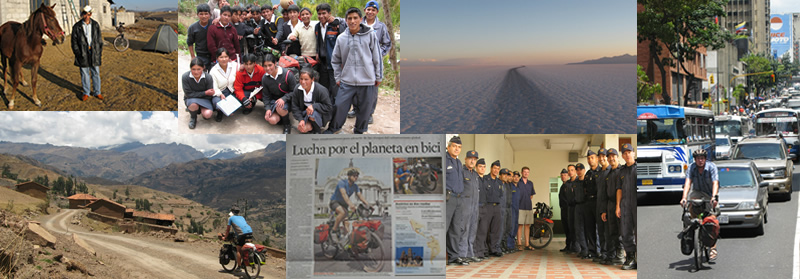

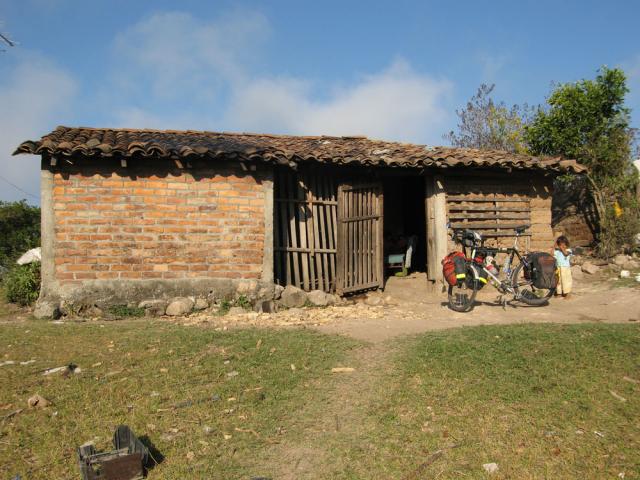









 Greentech Media
Greentech Media




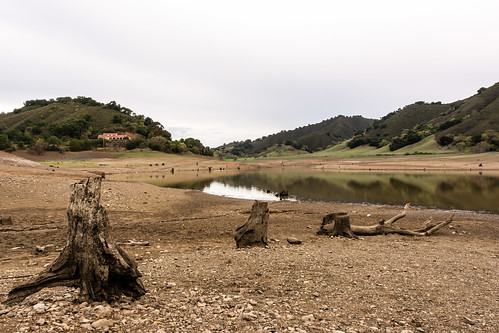


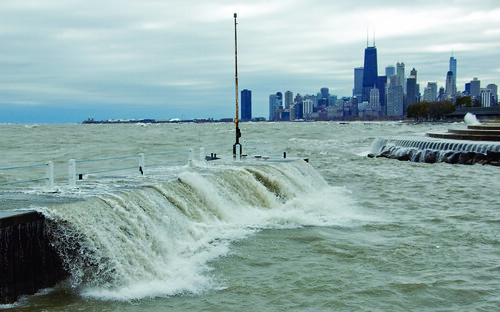

 Â
  Â
  Â
  Â
  Â
 

